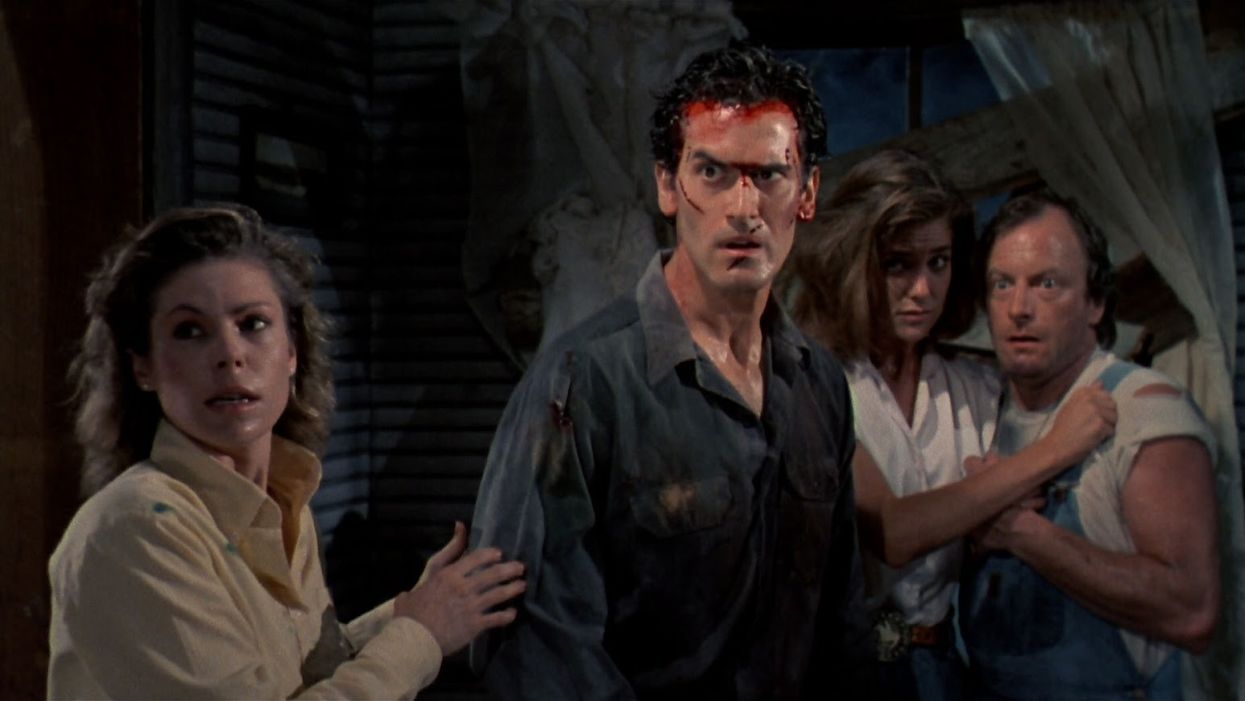How Did the Coens and Sam Raimi Define the Shaky Cam?
The Coens and Sam Raimi all came up around the same time and worked together more than you think.

A lot of people think the 1980s was a lost generation in Hollywood. Aside from a handful of classics, the 80s were only good for one thing: developing new voices. We got Jame Cameron, Ridley and Tony Scott, the Coens, and Sam Raimi (among others).
While the aesthetics, sound design, and music from many mainstream 80s films were kind of lame, these guys helped usher in a new era of filmmaking.
You might be surprised, but there was a lot of overlap amongst their careers.
One particular case was the Coens and Sam Raimi.
Blood Simple was the Coen's first feature they directed, but they had made a name for themselves as writers, too. They penned the movie Crimewave, which was directed by Sam Raimi. (Joel Coen also was an assistant editor on The Evil Dead, as well.)
And the direct collaboration didn't stop there... it extended to camera work as well.
Check out this video and let's talk after the jump!
How Did the Coens and Sam Raimi Define the Shaky Cam?
The careers of Sam Raimi and the Coen Brothers are very different, but once upon a time they were collaborators. In the crazy 80s, these guys could all be found on the sets of horror movies, working the low-budget genre arenas and helping one another out on their films.
This was before they all became incredibly successful and respected.
But you can see the influence of that work on their movies today.
After working with Sam on his no-budget masterpiece The Evil Dead, Joel Coen learned a cheap but effective camera trick to raise an audience's pulse...the shaky cam.
What is a shaky-cam?
Shaky camera, shaky cam, or the jerky camera is a cinematographic technique where a cinematographer purposefully dispenses with stable shots in favor of something more chaotic. It is a handheld camera, or a camera given the appearance of being handheld. For Raimi's movies, the camera was placed on a wooden plank and held on either end.
When the camera was moved forward and back, we got the scary monster POV.
Other people have used shaky cam to make the film sequence an ad hoc, electronic news-gathering, or documentary film feel.
In the best use of shaky cam, we get the feeling of reality and a sense of immersion, instability, or nervousness within the story or sequence. The technique can be used to give a pseudo-documentary or cinéma vérité appearance.
What's the downside?
Too much shaky cam can make viewers feel sick and puke. Like my date did in 2008 when we went to see Cloverfield.
How do you build a shaky-cam?
As we saw in the video, you can either just go handheld, or make a variety of apparatuses, like the camera on a piece of wood, to guide the kind of shakes and reality you want to show.
How did this crossover to the Coens from Raimi?
We know the Coens learned these tricks from Raimi, who was using this POV as the literal movements of evil in his movie. Raimi and the Coens use the plodding camera movement to convey the perspective of a character.
For Raimi, this perspective is the POV of a demon, like in the clip below.
The Coens use the shaky cam in Blood Simple and Raising Arizona. One of my favorites uses in Raising Arizona is how it's cut into the diaper chase scene. It gives us the emotion in moments, but the actual chase feels fluid and controlled. This sparing use keeps us from getting sick of it but still bolsters the mood.
The difference between these filmmakers is that the shaky cam in the Raimi is used purely for the horror, but in the Coen's work, it's used to give us different moods and tones depending on which character it is applied too.
Either way, this pervasive and cheap use of an aesthetic not only followed them as filmmakers, but it found mass appeal.
Shaky cam really blew up after Saving Private Ryan and the Bourne series, but its roots grew from low budget horror and some filmmakers from the 80s learning from each other and sharing secrets.
What's next? 50+ Camera Angles, Shots, and Movements!
Have you ever been overwhelmed at the possibility of every camera angle, framing, and shot type available as a filmmaker? Us too. So we provided a cheat sheet with definitions for you! There are so many camera movements and camera angles; it can be hard to keep track. To make film and television like the masters, you need to practice and learn the various camera movements, angles, shots, and tools.
But how can you know if you’re hitting all the basics without a comprehensive checklist? We put our heads together and came up with this list that should help any filmmaker master the basics and take on the industry.
Click the link and continue your education!
Source: Fandor












